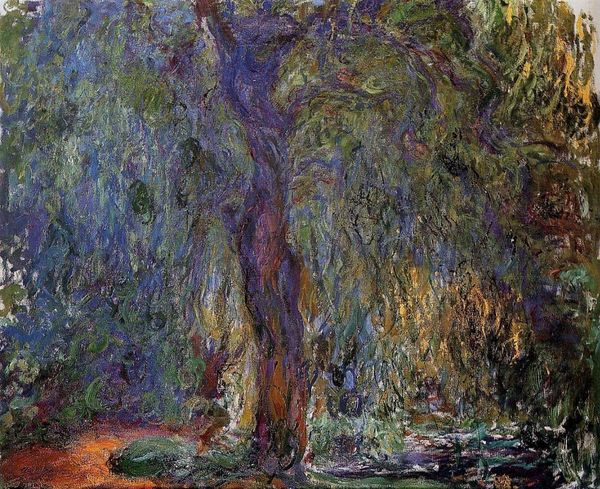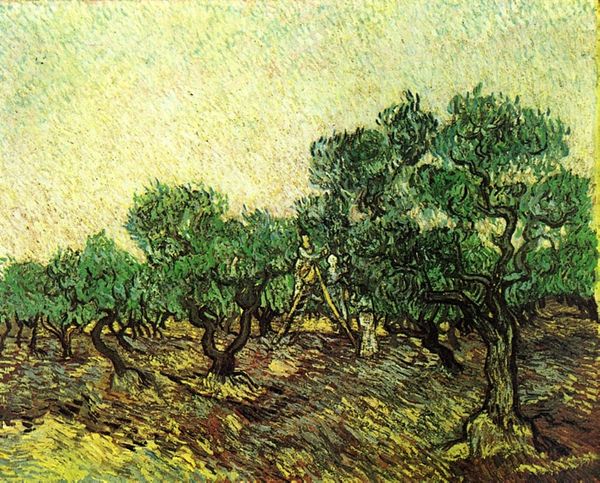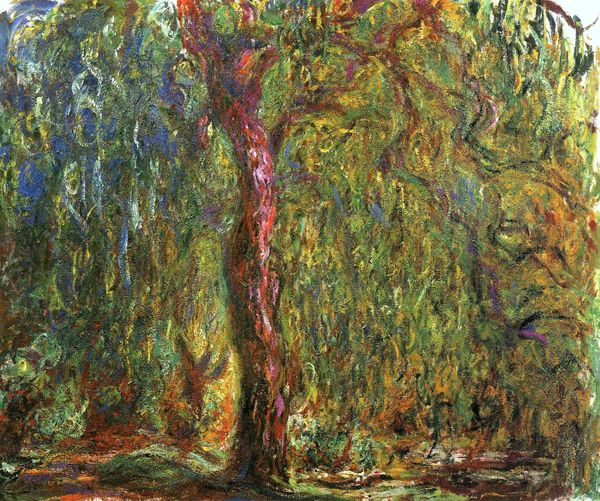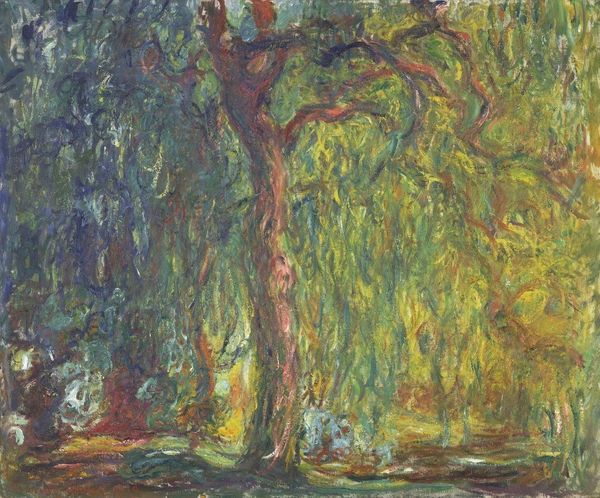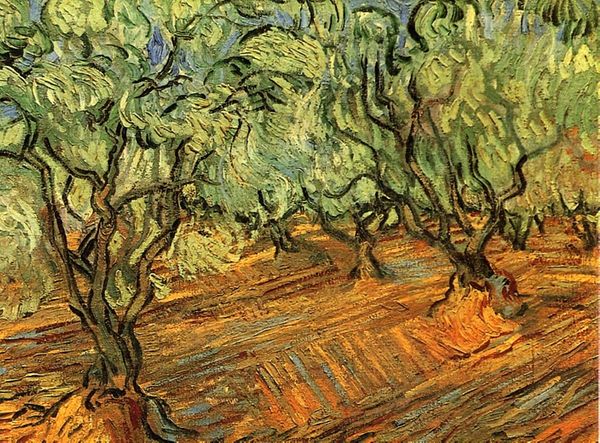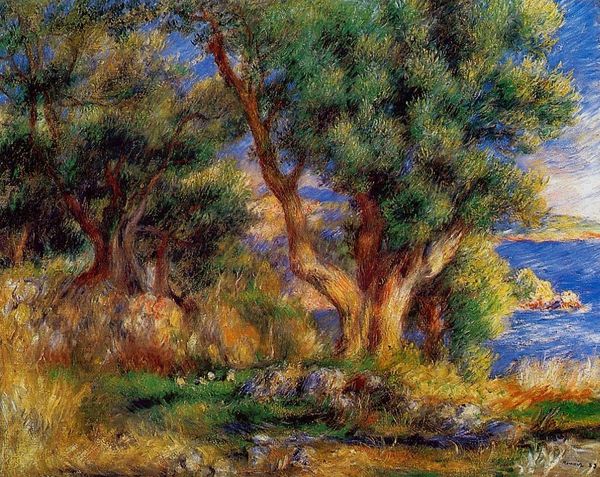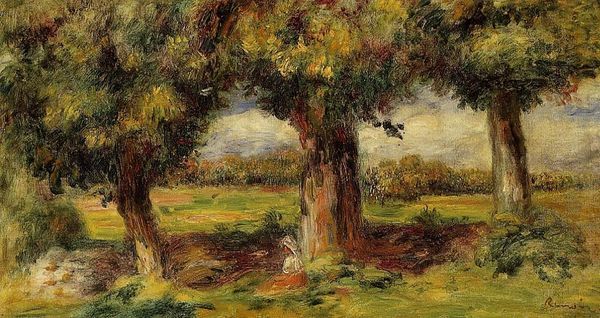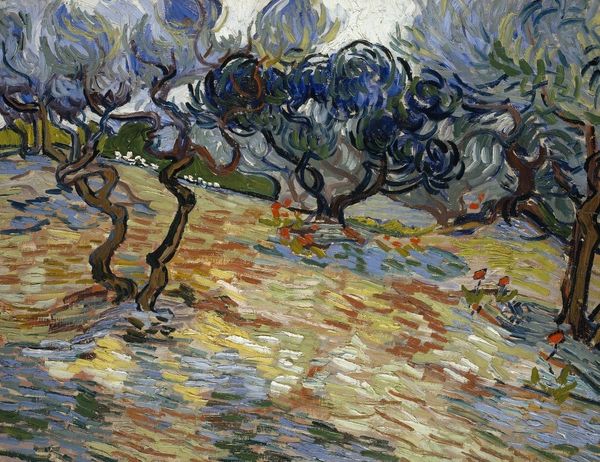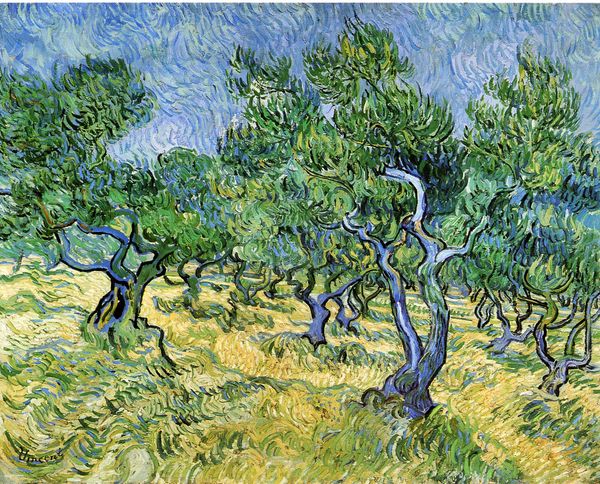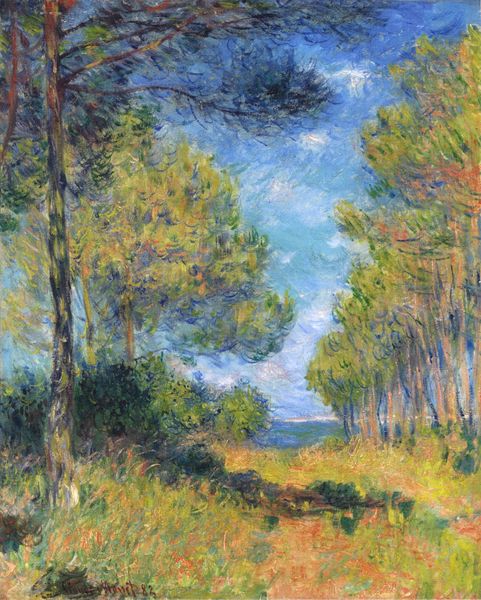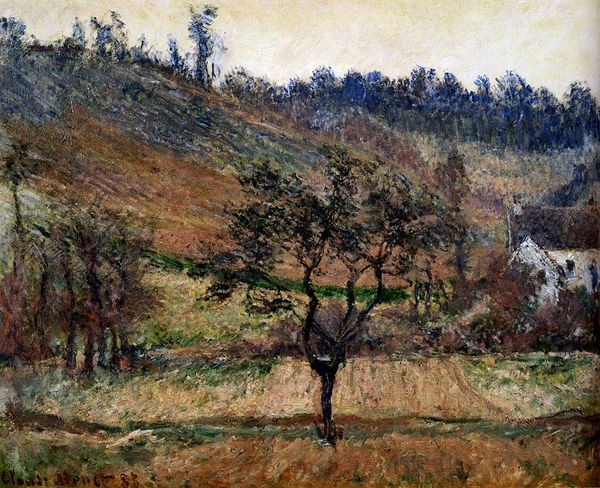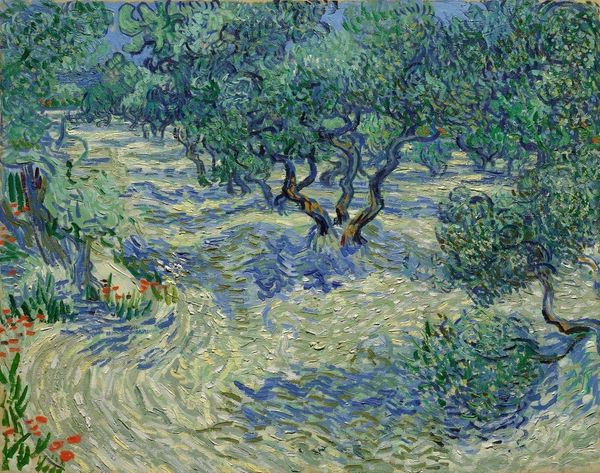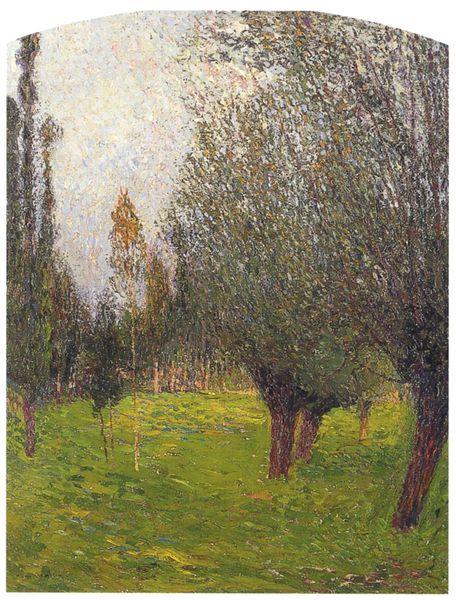
painting, plein-air, oil-paint
#
tree
#
painting
#
impressionism
#
plein-air
#
oil-paint
#
landscape
#
impressionist landscape
#
nature
#
nature
Copyright: Public domain
Curator: What immediately strikes me is the sheer volume of muted color. An intriguing range of blues and greens dominate the composition, softened with browns. Editor: Indeed. This piece is titled “Olive Trees (Study),” created by Claude Monet around 1884. What do you find interesting about Monet’s perspective in this landscape, particularly considering its place in the broader history of Impressionism? Curator: Monet, throughout his career, of course challenged academic painting by taking his easel outside. With the advent of transportable paint tubes, artists sought authentic observation, working directly “en plein air.” We see this in the gestural marks on canvas and the depiction of light in the olive groves. This method influenced a generation who turned from mythic allegories to everyday experiences. Editor: It's interesting how you frame it. From my point of view, Monet uses broken brushstrokes to explore how light transforms objects in real time. Notice how the twisted trunks are almost abstracted. Do you think he aims to challenge traditional concepts of form? Curator: Absolutely, to create form via visible brushstrokes would have been very new, however, artists need patronage. What is fascinating about Impressionism, in general, is the growing number of private collectors whose wealth from industry meant that they shaped art based on more progressive tastes. Monet catered for them to change social constructs in art that remains today. Editor: The chromatic subtleties are exquisite here—how each dab interacts to create light. Do you think, that Monet's formal techniques elevate this “study” into a deeply evocative aesthetic experience? It moves past just depicting place. Curator: He creates an evocative experience, which later in life translated into commercial opportunities! "Olive Trees (Study)" shows the socio-political climate which gave room for artists like Monet to thrive, reshaping cultural perceptions. Editor: I see now how it reflects those historical and cultural currents of his time and legacy, offering an escape into nature, via technique, rather than explicit social commentary. Curator: Exactly, so although we approach the artwork from distinct positions, these discussions only deepen our appreciation.
Comments
No comments
Be the first to comment and join the conversation on the ultimate creative platform.
